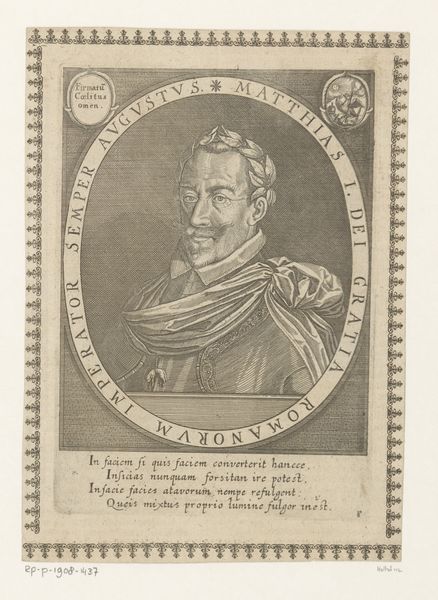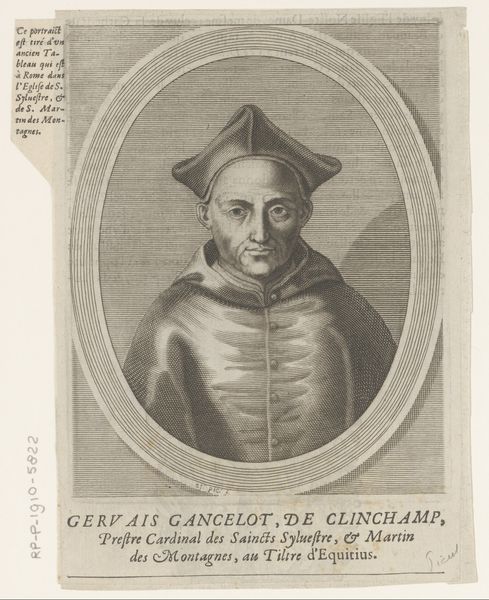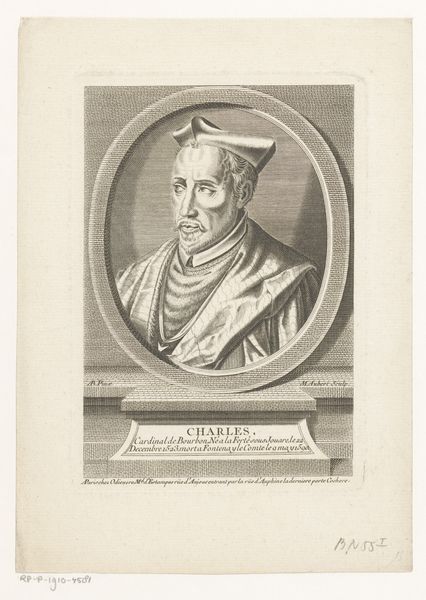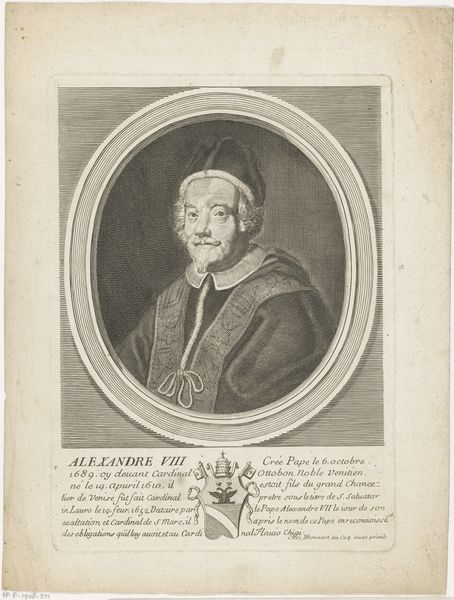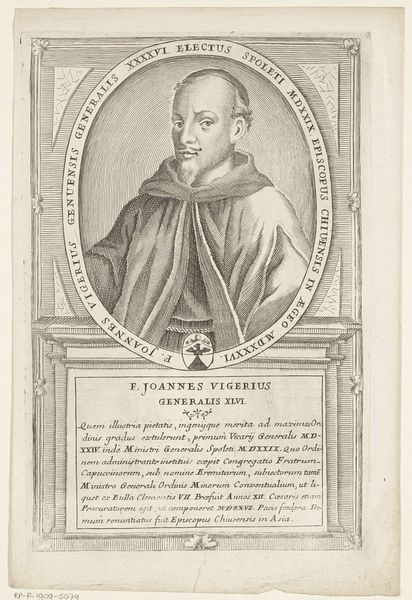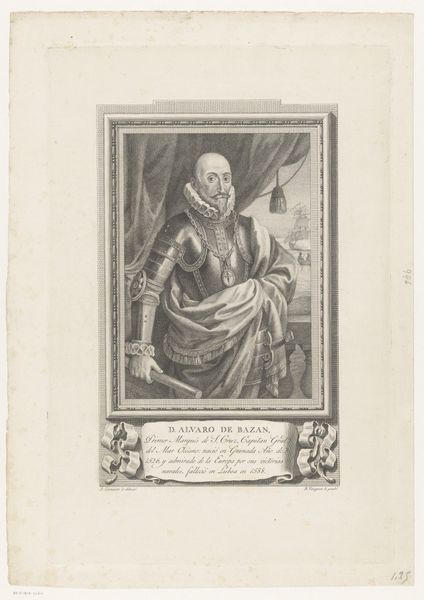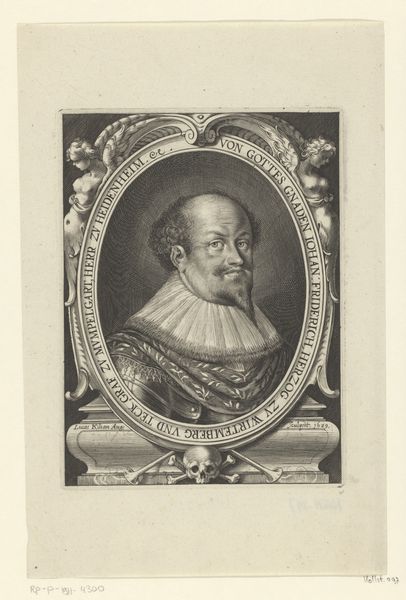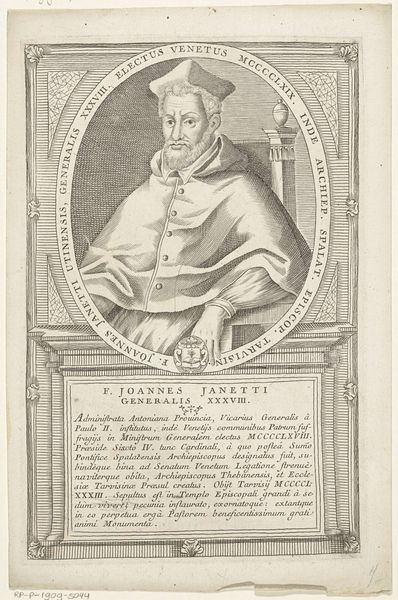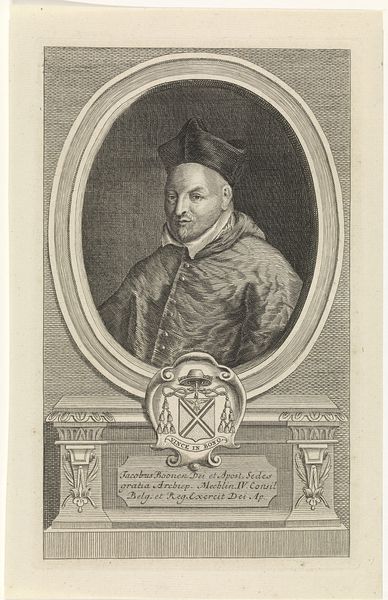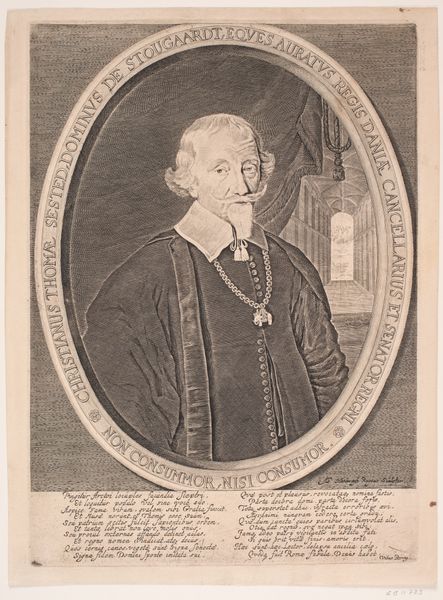
print, engraving
#
portrait
#
baroque
# print
#
figuration
#
history-painting
#
engraving
#
calligraphy
Dimensions: height 176 mm, width 142 mm
Copyright: Rijks Museum: Open Domain
Editor: We're looking at Etienne Picart's 1660 engraving, "Portret van Guillaume de Court Novel". The subject is framed in an oval, and the print includes a fair amount of descriptive text. It's striking how meticulously the artist captured the textures of his clothing. What can you tell me about this piece? Curator: Well, let’s consider the context. This engraving, a *print*, served a specific public function. It's not just a portrait; it’s a statement of power and position in 17th-century society. Note how the inscription presents Guillaume de Court Novel's impressive list of titles. It carefully details his roles: Doctor of Theology, Abbot, Bishop, and Cardinal. It was produced during the baroque era; can you detect elements that tell you that? Editor: Yes, it's relatively ornate, especially when one reads the inscribed lettering. And, so the engraving disseminated Novel's importance through its distribution? Curator: Exactly! Consider the institutions at play. The Church was a major patron of the arts. Prints like these were commissioned and circulated to bolster the image and authority of its leaders and highlight the reach of the church itself. Look at the way he's presented, too—does his gaze suggest anything to you? Editor: He does appear quite solemn and almost severe. Was this typical for portraits of religious figures at this time? Curator: Precisely! It projects an air of piety and intellectual gravitas, carefully cultivated for public consumption. This wasn't simply about capturing a likeness, but about constructing a very specific, very public persona. It demonstrates a conscious effort of impression management through imagery, in which the sitter and the commissioning bodies have a social and institutional influence. Editor: I see now it’s about more than just capturing a face; it's about the image of power. Thanks! Curator: Indeed! Art provides us with the chance to view historical social structures, allowing us to grasp how those figures shaped their legacy.
Comments
No comments
Be the first to comment and join the conversation on the ultimate creative platform.

